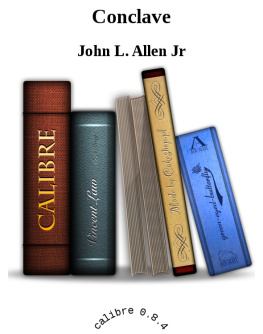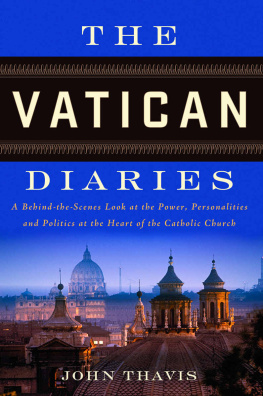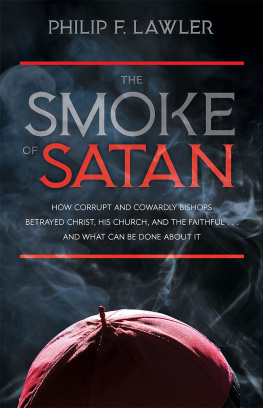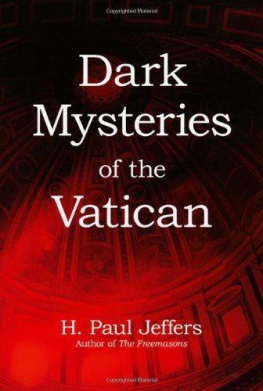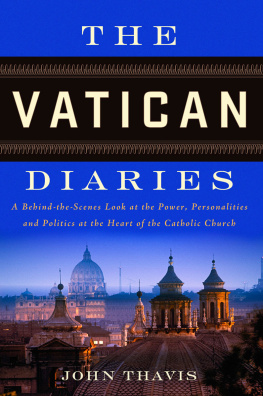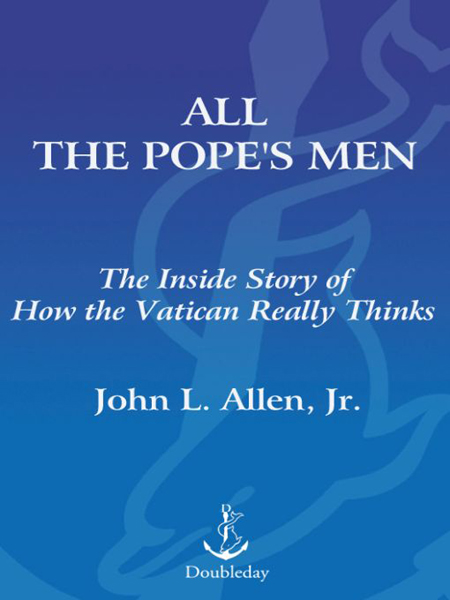
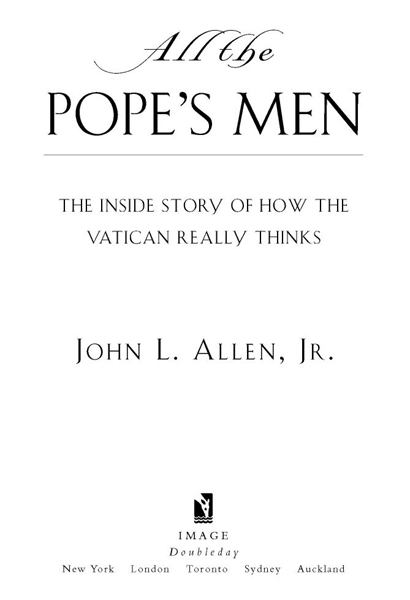
Table of Contents
To Raymond and Laura Frazier, my grandparents, whose love made
this book possible; to the Capuchin Franciscans in Hays, Kansas, whose
wisdom helped to make the book intelligible; to my colleagues in Rome
and at the National Catholic Reporter, whose companionship made
researching and writing the book enjoyable; and to my wife, Shannon,
whose unfailing support made the book a reality.
INTRODUCTION
The aim of this book is to promote better informed, and hopefully less acrimonious, conversation between the Vatican and the English-speaking world by identifying the core values and experiences that underlie specific Vatican policy choices. In that way, discussion can be based on real, as opposed to presumed, motives, and thus can be more akin to genuine dialogue. The book is rooted in my experience of covering the Vatican on a daily basis in Rome, as well as following the Pope to scores of spots around the world, and then translating these experiences for English-speaking audiences. I approach this work both as a journalist and as a Catholic, and its probably in order here to say a word about each.
As a journalist, my goal is to inform and to explain. I want to tell readers whats happening, but I also want to help them understand why its happening and what importance it might have. This way of conceiving the task takes me beyond the strict objectivity of simply recording the news," in the way that a wire service such as the Associated Press or Reuters approaches things, and into the more subjective realm of context, background, and consequences. I stop short, however, of offering my personal opinion on the news, such as whether a particular Vatican document or policy choice is right or wrong, good or bad, successful or not. First of all, I doubt most readers care what John Allen thinks (though Im always surprised, based on my mail, how many people are convinced they know what I think, and how often these hypotheses contradict one another). In any event, my personal conclusion would be the least interesting aspect of any story. Far more intriguing is trying to ferret out where a particular Vatican choice came from, how it reflects the logic and psychology of the institution, and what implications it might have across a range of other issues. This work of analysis aids readers in forming their own judgments, and I hope my journalism is of equal interest to all partiesliberal and conservatives, Vatican critics and defenders, reformers and traditionalists. I do not intend to take sides. Of course, this describes my intent, and how well I pull it off is for others to judge.
Despite the fact that Im Catholic, I do not view covering the Vatican as a religious mission. The principal danger with many Catholic journalists is that they tend to fall into one of two camps: either Catholics angry with the institution seeking to reform it or Catholics in love with the institution seeking to propagate it. Both can be noble instincts, and I believe they can coexist in the same soul. Neither, however, makes a good point of departure for analytical journalism, because both end up skewing ones judgment toward one side of arguments that are always complex. I do not see my role as promoting a particular set of theological or ecclesiastical conclusions. Truth to be told, in many cases I wouldnt have personal judgments to offer even if I thought someone wanted to hear them. One puzzling aspect of public discussion these days is the way that everyone is expected to have an opinion on everything, regardless of what they actually know about the subject. My experience is that the more shades of gray you perceive in a situation, the harder it usually is to be definitive about whos right and whos wrong. Personally, Im not sure if celibacy should be made optional, or if the Pope should travel less, or whether celebrating Mass with both priest and people facing East would enhance the reverence of the liturgy. I can see good arguments on all sides. What I can talk about with authority, however, is what the main points of contention surrounding these issues are, what values motivate the various parties to the debate, and what consequences might flow from particular choices. Thats the service I can offer as a journalist, and it is the spirit in which this book is written.
The suspicion that I must have a theological agenda is sometimes exacerbated by the fact that the newspaper I write for, the NationalCatholic Reporter, is widely identified as the leading voice of liberal Catholicism in the English-speaking world. Some readers assume I must be trying to push a liberal point of view, and if its not obvious how Im doing that, its probably because I was especially crafty at concealing my premises. Its true that my paper does express a strong perspective on its editorial pages, but thankfully Im left clear of all that. I dont write the papers editorials, and am rarely consulted about them. In terms of my own work, I have never been pressured by NCR to pursue a particular story, or to take a particular line, in order to score an ideological point. I have always felt free to try to describe the reality of the Holy See as honestly and fairly as possible. When I have occasionally disappointed or angered some elements of the readership, the editors have always stood by me. The fact that I am paid by a newspaper with a strong editorial line does not, I hope, mean I am incapable of living up to the journalistic aims described above. All I ask is that readers judge my work on its merits. In the same way, its true that I was raised, educated, and acquired most of my professional experience prior to Rome in moderate-to-liberal American Catholic environments. But everyone emerges from a particular context; that cant be helped. The question is how well one is able to bring other points of view into focus and to do them justice. Thats a discipline the Thomist in me wants to believe everyone, at least in principle, is capable of exercising.
It would be disingenuous, however, to suggest that my work is value-neutral with respect to my religious affiliation. As a Catholic, I hope my journalism is of value to my Church. I see that contribution, however, not in terms of steering the Church in some specific direction, but in facilitating conversation among Catholics that is informed and respectful. After four years of covering the Vatican, my perception is that often people base their judgments about Rome" on misconceptions and mythology, imputing motives or making assumptions that are either inaccurate or, at best, highly selective. Lacking context, people spin off into accusation and acrimony. By providing better information and context, I hope I can promote better understanding.
As an American Catholic, I see this work as especially crucial because quite often America and Rome are not on good speaking terms. I saw this repeatedly during both the sexual abuse crisis and the war in Iraq, both cases in which many American Catholics, though not necessarily the same ones on both issues, felt misunderstood, even sometimes betrayed, by the Vatican. Officials in the Holy See felt equally uncomfortable, dismayed, and even occasionally scandalized by what they saw coming from the American Catholic community. The emotion on both sides often reflected incomprehension. Communication between Rome and America was sometimes impossible, not because there was nothing to talk about, but because the two parties were talking past each other, making assumptions that were often flawed and then responding to those assumptions rather than to what was really motivating the other. Americans, for example, often assumed that the Vaticans real" concern in both the sex abuse crisis and the war was maintaining its own power, while officials in the Holy See sometimes suspected that what was really motivating the Americans in both cases was money. In truth, neither factor explains very much, as we will see later on in chapters 6 (the sex abuse crisis) and 7 (the Iraq war).
Next page

